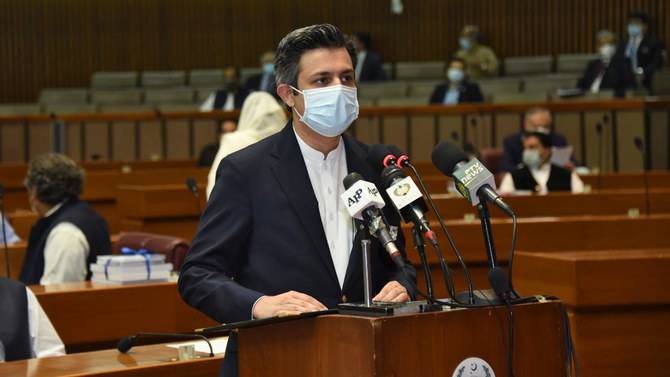Budget 2020-21: A story of more pains than gains

Stay tuned with 24 News HD Android App

Prime Minister Imran Khan was of the view that when the people will find out that their rulers are honest and are not spending taxpayers‘ money on their luxuries and protocol they will trust the government and pay more taxes. Imran Khan had also promised that he would double the tax collection but unfortunately, it is not happening. Instead, the growth in revenue collection witnesses a historic nosedive.
During the first financial year of the last PPP government 2008-09, the revenue collected grew from the previous year‘s Rs847.2 billion to Rs1,161.2 billion. It went further up to Rs1,328.6 billion during 2009-10 and touched Rs1,558 billion in 2010-2011. The FBR collected Rs1,883 billion during 2011-12 and Rs1,946 during 2012-13, which was the last fiscal year of the PPP government.
On the other hand, the PML-N government collected Rs2,255 billion in 2013-14; Rs2,590 billion 2014-15; Rs3,112 billion during 2015-16; Rs3,367.9 billion during 2016-2017 and Rs3,842 billion during 2017-18.
According to Year Book 2018 of the FBR, the overall FBR revenue collection during the last five years had increased from Rs2,255 billion in FY 2013-14 to Rs3,842.1 billion in FY 2017-18. Five years‘ average growth has been 14.6 percent.
Thus the 14.6 percent growth in revenue collection during the last PMLN government has now come down to merely 2.5 percent. This has happened despite the PTI government‘s claim that during their rule there is no corruption and no wastage of public money.
The PTI government has also declared that there will be a shortfall of Rs 3195 billion, which is estimated to be 7% of GDP. This shortfall is estimated after taking into account the revenue collection of Rs 4963 billion this year.
It may be recalled that Pakistan achieved the highest GDP in FY 2018 of Rs 34,600 billion (USD 314.6 billion). Therefore, the revenue collection achieved during the period was ever highest at Rs 3,842 billion, with a growth rate of 5.82%.
Foretelling the size of the economy, projected on the basis of 7% shortfall, the GDP for the FY 2020-21 is estimated to be Rs 45,600 billion. The budget reflects total expenditure of Rs 7,136 billion with net federal revenue of Rs 3,942 billion, hence creating a deficit of Rs 3,195 billion.
It is pertinent to highlight that the PSDP fund has been slashed to Rs 650 billion. For the upcoming fiscal year, the government has approved a low-economic growth plan, suggesting that the country will not be out of economic wounds in the next fiscal year too. The budget does not immediately address the issues such as economic slowdown, growing unemployment rate and even the high budget deficit in the next year.
The government has proposed Rs4,963 billion tax collection target for the FBR which is 27% higher than an anticipated and four-time downwardly revised collection of Rs3,908 billion. The Rs3,900 billion collection will be equal to 9.4% of the GDP.
The real challenge will be the implementation of the budget, as its success hinges upon the FBR’s ability to achieve a challenging Rs4.963 trillion tax collection target, which is 27% higher than the estimated collection in the outgoing fiscal year. The government intends that Rs3,195 billion deficit hole will be filled by taking Rs810 billion net foreign loans, Rs2,400 billion domestic loans and Rs242 billion provincial cash surplus.
One has to bear in mind that during the last two years the government had already inflicted a hole of about 25% in the economy. The above narration makes the equation simpler to understand, with few simple questions:
1. Will the targeted GDP of Rs 45,600 billion be achieved?
2. What will be the Corona Virus impact?
3. The budget sets a daunting task for FBR to collect Rs4,963 billion revenue. Will FBR be able to ensure collection under such economic slowdown?
4. Will the deficit remain 7% of GDP, as the expenditure is already allocated?
5. How the Exogenous and Endogenous environment will impact the economy? (The ‘exogenous’ economic disruption caused by the pandemic – upended supply chains, halted global transportation and logistics links, interrupted flow of goods, people, investment and capital); — The ‘endogenous’ economic disruption caused in response to the pandemic via lockdowns and other suppression measures (closed factories, businesses and markets).
Budget 2020-21, the Government has tried to appease all stakeholders and announced a Rs7.1 trillion budget in a bid to revive the stalled International Monetary Fund (IMF) programme, which the experts termed unrealistic and full of internal contradictions.
